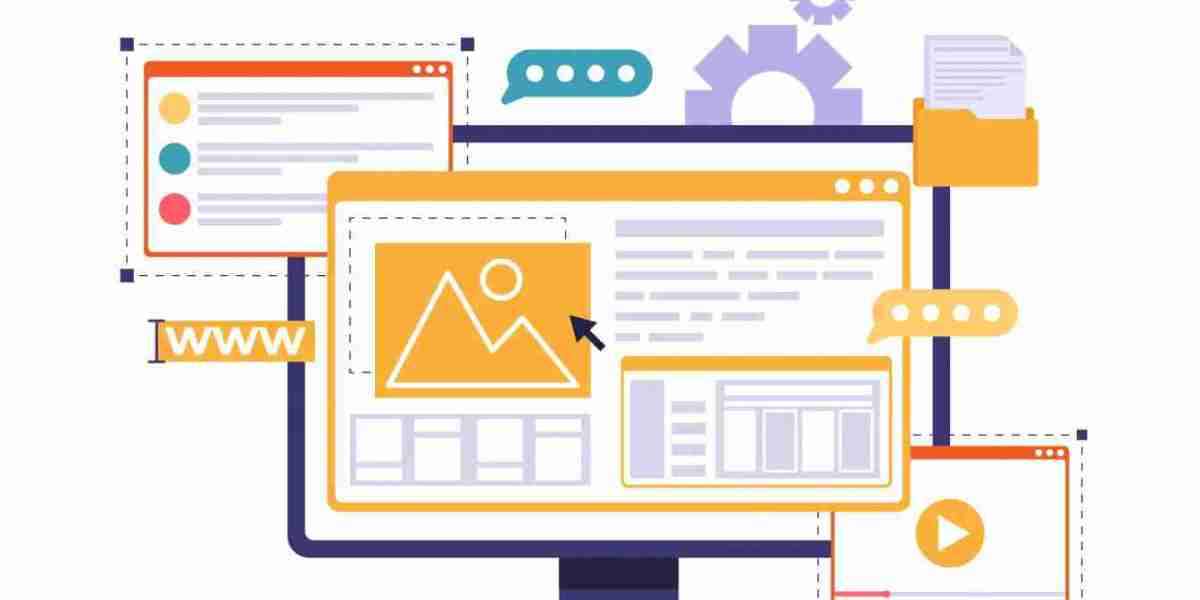A test automation framework is a collection of rules or guidelines for generating and designing test cases. It includes a combination of practices and tools developed to assist the QA professionals in testing more effectively. Moreover, these guidelines may encompass coding standards, object repositories, test-data handling techniques, processes for securing test results, and data on accessing external resources.
These rules are mandatory, and testers must design or record tests without adhering to them. However, accessing an organized framework offers more benefits that professionals would miss out on otherwise. In this blog, we shed light on some of the prominent types of automated testing frameworks.
What are Test Automation Frameworks?
Automated Testing Frameworks are designed to simplify the process of testing software applications. They provide a structured environment where test scripts can be executed and their outcomes evaluated without manual intervention. This approach reduces the effort involved in repetitive testing tasks, leading to increased efficiency and accuracy in the software development lifecycle.
Types of Test Automation Frameworks
Linear Scripting Framework
In a linear test automation framework, testers are not required to write code or generate functions. Moreover, the steps in it are written chronologically, and the process is also known as the record-and-playback framework. The tester records every step, like checkpoints, user input, navigation, etc., and then it is automatically played back to conduct the test. Considering there is no need for custom code, this framework can be executed without any expertise in test automation.
Advantages
- Simplicity and Clarity: Linear scripting is straightforward, making it easier to understand and follow. It's particularly beneficial for beginners or when a clear, unambiguous progression is needed.
- Predictability: Since the script follows a defined path, outcomes are predictable, which aids in planning and resource allocation. This predictability is essential in many programming and narrative contexts.
- Ease of Debugging: A straightforward flow makes identifying and fixing issues simpler. There are fewer variables and branching paths to consider for effectively streamlining the debugging process.
Disadvantages
- Lack of Flexibility: Linear scripting is often criticized for its rigidity. It doesn't easily accommodate changes or adapt to user inputs or scenarios.
- Limited User Engagement: In games and interactive media, linear scripting can lead to a less engaging experience, as it offers limited options and interactivity for the user.
- Predictability Can Be a Downside: While predictability is an advantage in some cases, it can also be a drawback. In narrative and game design, predictability can lead to boredom or a lack of challenge.
Modular Testing Framework
A modular testing framework requires testers to divide the application into separate testing categories like functions, units, sections, etc. Each of the classes is tested individually. Once the application is divided, testers create a test script for every part; they are then combined to create more extensive tests hierarchically. Additionally, the larger test sets work to represent different test applications. In the modular form of a testing framework, it is recommended to build an abstraction layer. This way, the sections won't influence the overarching module.
Advantages
- Reusability: By dividing tests into independent, reusable modules, the framework facilitates reusability, which can significantly save time and resources.
- Maintainability: Updates or fixes can be applied to individual modules without affecting the entire suite, enhancing maintainability.
- Scalability: The framework can easily accommodate or expand new tests, making it highly scalable.
Disadvantages
- Initial Setup Time: Setting up a modular testing framework can be time-consuming and requires careful planning.
- Complexity in Integration: Integrating different modules can sometimes lead to complexities, especially if the modules are not designed with integration in mind.
- Dependency Management: Managing dependencies between modules can be challenging and may require additional tools or strategies.
Library Architecture Testing Framework
The library architecture testing framework identifies similar tasks within the scripts and splits them into groups based on the function, rather than dividing the app under various tests. This allows the application to be grouped by the common objectives. Moreover, functions are stored in the library that they can access whenever needed.
Advantages:
- Consistency and Standardization: Ensures all library components adhere to a defined architectural standard, leading to more consistent and predictable behavior.
- Early Detection of Issues: Helps identify architectural issues early in the development process, reducing the time and cost of fixing them later.
- Improved Code Quality: Encourages better coding practices and architectural decisions, leading to higher overall code quality.
Disadvantages:
- Initial Setup Complexity: Setting up an architecture testing framework can be complex and time-consuming.
- Possible Overhead: May introduce additional overhead in the development process, especially if it's too rigid or not well-integrated.
- Learning Curve: There's a learning curve for developers to understand and effectively use the framework, making the process complex.
Data-Driven Framework
The data-driven framework breaks up script logic and test data and allows the testers to store data in the framework externally. At times, testers need to test a particular feature or function at different times with multiple data sets. In such situations, testers cannot rely just on the data coded into the script. This framework allows the testers to store and pass various parameters to test scripts from different data sources like text files, excel spreadsheets, ODBC repositories, SQL tables, etc.
Advantages:
- Improved Decision-Making: Data-driven frameworks improve decision-making based on empirical evidence and analytics, which can lead to more accurate and objective outcomes.
- Increased Efficiency: Automating data analysis help streamline processes, reducing time spent on manual data handling.
- Enhanced Customer Insights: Data-driven approaches provide deep insights into customer behavior, aiding in better-targeted products and services.
Disadvantages:
- Data Quality and Integrity Issues: A data-driven framework's effectiveness depends on how accurate and good the data is because poor data quality will bring misleading insights.
- Privacy and Security Concerns: Handling large amounts of data, especially personal data, raises significant privacy and security concerns.
- Complexity and Resource Intensity: Implementing a data-driven framework is complex and resource-intensive, requiring specialized skills and technology.
Hybrid Testing Framework
A hybrid test automation framework amalgamates different forms of testing automation frameworks to help leverage the potential of each while eliminating their weaknesses. Each application is different, and the process of testing these applications needs to be distinctive as well. And leveraging a hybrid framework allows testers to be more adaptable and agile to get better test results.
Advantages
- Flexibility and Scalability: Hybrid frameworks are highly adaptable to changing requirements and can easily scale as the complexity of the software grows.
- Reusability: They allow for the reuse of test scripts, reducing the effort required for test development.
- Increased Test Coverage: Integrating different approaches ensures more comprehensive test coverage.
Disadvantages
- Complexity: Integrating multiple frameworks can lead to increased complexity, making it more challenging to understand and manage.
- Higher Initial Setup Cost and Time: Setting up a hybrid framework requires more time and resources than simpler frameworks.
- Skilled Resources Required: Testers demand a higher level of expertise to use and maintain the framework efficiently.
How to Choose the Right Test Automation Framework?
Selecting the most suitable test automation framework is a pivotal decision in software development. This choice should be based on a thorough analysis of various factors, each of which plays a key role in understanding the strength of the testing process.
- Project Requirements: For project requirements, organizations can take into account the size, complexity, and type of application they are testing. For instance, a data-driven framework might be ideal for applications where input data varies significantly.
- Team Expertise: It’s vital that organizations assess the skill level of their testing team. Complex frameworks require a steep learning curve and more advanced programming skills. Opt for a framework that aligns with your team's abilities to ensure effective utilization.
- Maintainability and Scalability: Organizations can look for frameworks that are easy to maintain and scale as their application grows. Modular and hybrid frameworks are often preferred for large-scale projects due to their scalability and ease of maintenance.
- Integration Capabilities: Integration capabilities involve considering how well the framework integrates with other tools and technologies used in your project. This includes version control systems, continuous integration tools, and reporting tools.
- Flexibility and Customization: The ability to customize the framework to meet specific project needs can be a significant advantage. This includes custom reporting, integration with other tools, or adding specific functionalities.
The decision to choose a test automation framework should be made after careful consideration of these factors. It's about finding the right balance between the project's needs, team capabilities, and the overall goals of the software development process. This strategic approach ensures that the selected framework meets current requirements and is adaptable to future changes and advancements in the field.
Best Test Automation Frameworks
Selecting the right test automation framework ensures software quality and accelerates release cycles. Open-source frameworks offer flexibility, community support, and cost-effectiveness. Below are some of the best open-source test automation frameworks widely adopted by professionals:
1. Selenium
Selenium is a leading open-source framework for web application testing. It supports multiple programming languages and works across various browsers and operating systems. Selenium WebDriver allows for creating robust, browser-based regression automation suites and tests.
Key Features:
- Supports multiple browsers.
- Highly extensible with third-party libraries.
- Allows parallel test execution with Selenium Grid.
- Integrates with CI/CD tools like Jenkins and Maven.
2. Appium
Appium is designed for mobile application testing. It enables automated testing of native, hybrid, and mobile web apps. Appium uses the WebDriver protocol and supports multiple programming languages, making it great for mobile test automation.
Key Features:
- Cross-platform support for Android and iOS.
- Utilizes the WebDriver protocol for interaction.
- Enables test scripts in multiple programming languages like Java, Python, and Ruby.
- Integrates seamlessly with cloud device labs.
3. Cypress
Cypress is a modern end-to-end testing framework built for the web. It operates directly in the browser, offering real-time reloading and automatic waiting, simplifying asynchronous testing. Cypress is known for its developer-friendly features and easy setup.
Key Features:
- Real-time reloading for a better developer experience.
- Handles asynchronous requests and waits automatically.
- Built-in time travel feature for debugging.
- Provides detailed error messages and stack traces.
4. Robot Framework
Robot Framework, a keyword-driven test automation framework, helps with testing and robotic process automation (RPA). Its simple tabular syntax and extensibility through libraries make it accessible.
Key Features:
- Extensible with numerous libraries like SeleniumLibrary and AppiumLibrary.
- Allows for test scripting in plain English using tabular syntax.
- Supports testing for web, API, desktop, and mobile applications.
- Generates detailed reports and logs.
5. JUnit
JUnit is used for Java applications. It is primarily used for unit testing but can be extended for integration and regression testing. JUnit's annotations and assertions simplify test case development.
Key Features:
- Supports annotations for organizing tests.
- Provides assertions for verifying test outcomes.
- Enables parameterized testing for running the same test with different data sets.
- Easily integrates with build tools like Maven and Gradle.
6. TestNG
Inspired by JUnit and NUnit, TestNG introduces advanced features like data-driven testing, parameterization, and parallel execution. It suits various test categories, including unit, functional, and end-to-end testing.
Key Features:
- Supports data-driven testing with @DataProvider.
- Enables test grouping, sequencing, and parameterization.
- Facilitates parallel execution of tests.
- Generates rich HTML reports for results visualization.









